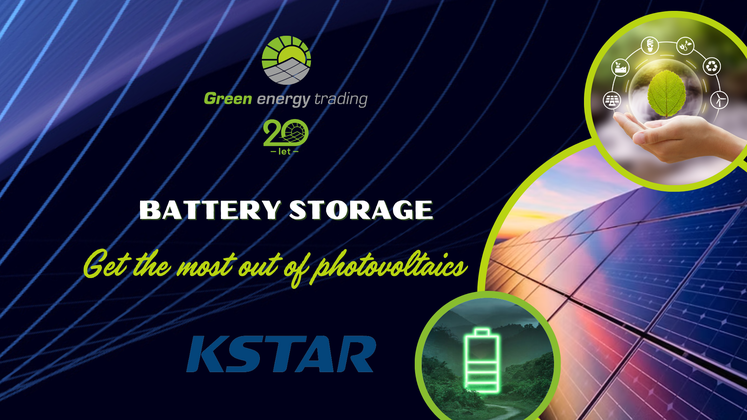KSTAR: Енергия под контрол лесно и ефективно
 18. 7. 2025
18. 7. 2025
Modern society is looking for ways to use renewable energy sources efficiently. One of these is undoubtedly solar radiation. It is an inexhaustible source of energy. That is why photovoltaics are becoming increasingly popular.
It is a very environmentally friendly solution that allows you to obtain heat, hot water or charge your electric car. However, it is not always possible to consume all the energy at a given moment, resulting in a surplus.
The best way to use surplus solar energy is to store it for later consumption. Currently, there are two options available: virtual and physical batteries.
Virtual batteries
A virtual battery is a battery that does not physically exist. Your surplus solar energy automatically ‘flows’ back into the grid via your smart meter. As the provider of the virtual battery service, your electricity supplier monitors these flows via online data from your smart meter and records them in its business systems.
However, once it has passed through the smart meter, the ‘stored’ solar electricity is physically merged with the other electricity in the grid and is consumed almost immediately by other electricity consumers. Therefore, only a billing record exists.
Storing solar surpluses in a virtual battery usually costs nothing, but when you want to consume them, you pay all distribution charges except for the electricity itself, known as power charges. These charges account for approximately 67% of the total price of electricity for households and 58% for businesses.
Physical batteries and their advantages
A physical battery is installed at the point of solar energy production, near the distribution box. It is mostly used to store excess solar energy or night-time energy.
The advantages of a physical battery include a one-off investment in its purchase and no additional monthly fees. However, you can significantly reduce this investment thanks to subsidies that often apply to the purchase of ESS (energy storage systems).
You can even earn money with a physical battery by providing regulatory services to stabilise the grid.
In addition, the battery can serve as a backup power source in the event of a power outage.
KSTAR - a solution for all
KSTAR products are designed for those looking for reliability and simplicity in everyday operation. They are ideal for demanding users who appreciate quality workmanship and easy installation.
Thanks to premium CATL battery cells and intelligent design, KSTAR solutions are characterized by exceptional safety, efficiency and flexibility. They are definitely the right choice, whether for use in the home or for energy management in the commercial sector.

Why buy KSTAR products from us?
Our company Green Energy Trading is an official distributor of KSTAR and can therefore offer you all the technical support and advice you need.
At our training centre in Znojmo we offer professional training on KSTAR products. We also have KSTAR KAC50DP-BC100DE training equipment available. You can see this ESS suitable for commercial use with your own eyes and try its operation.
For those of you who have our headquarters in Znojmo at hand, we of course also offer online training and remote technical support.
KSTAR BluE-S Series
The KSTAR BluE-S Series residential energy storage system is the most advanced three-phase all-in-one energy storage product.
It offers a safe, intelligent and highly efficient solution for residential installations.
The three-phase hybrid inverter offers an intelligent modular design and online monitoring capability via an app.
In addition, the tariff can be programmed depending on the time of use. For example, recharging at night during low load times and use during the expensive afternoon peak.
Low maintenance costs and easy installation are a big advantage.

KSTAR BluePulse
KSTAR BluPulse commercial energy storage systems are characterized by safety, reliability and user-friendliness.
The KSTAR ESS KAC50DP-BC100DE and 2x KAC50DP-BC197DE outdoor solutions are designed for small to medium-sized energy storage applications and microgrid projects in the commercial and industrial sectors.
Integrated with the CATL LFP battery solution, they provide secure energy storage and management of the energy produced.
It offers storage scalability up to 2 MWh capacity as well as several basic operating modes (self-consumption, peak load management, backup).
